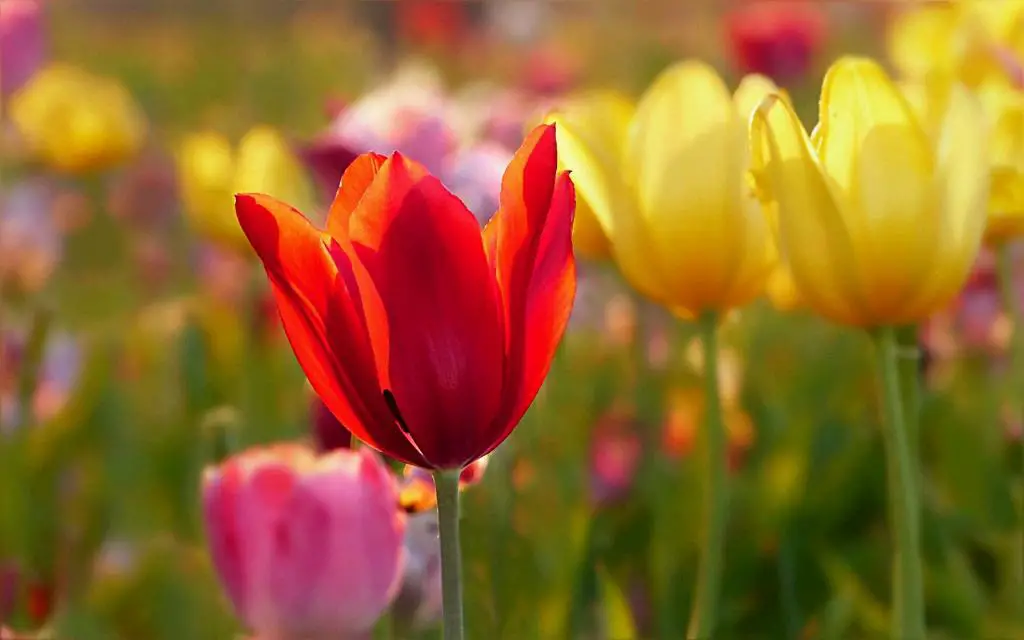When it comes to planting tulips, it’s essential to consider a few key factors to ensure your bulbs thrive and blossom into beautiful flowers. One of the crucial aspects to keep in mind is the amount of sunlight your tulips will receive. Tulips generally do best in full sun in the northern regions, while in the south, they prefer partial shade to protect them from excessive heat.
Equally important is the type of soil you plant your tulip bulbs in. Opt for well-drained soil with a pH level between 6 and 7 to provide the ideal growing conditions for your tulips. Make sure to position the bulbs with the pointed end facing upwards to facilitate proper growth.
Spacing is another critical factor to consider when planting tulips. It’s advisable to place the bulbs approximately 4-6 inches apart to give each bulb enough space to develop without overcrowding. This spacing allows the tulips to grow and bloom without competing for nutrients and space.
When it comes to planting depth, a general rule of thumb is to plant tulip bulbs around three times as deep as the bulb’s length. This depth provides the bulbs with adequate protection and stability while allowing them to establish strong roots for optimal growth.
Before planting your tulip bulbs, it’s crucial to prepare the soil properly. Ensure that the soil is well-draining to prevent waterlogging, which can lead to bulb rot. Amending the soil with organic matter such as compost can improve its texture and fertility, providing a nutrient-rich environment for your tulips.
Timing is key when planting tulip bulbs. It’s best to plant them in the fall before the first frost, allowing the bulbs to establish roots before winter sets in. This early planting ensures that your tulips will bloom beautifully when spring arrives, ushering in a vibrant display of colors in your garden.
After planting your tulip bulbs, it’s essential to water them thoroughly to encourage proper root development. However, be cautious not to overwater, as excessive moisture can lead to bulb rot. Monitor the soil moisture levels regularly to ensure that it remains moist but not waterlogged.
Another aspect to consider when planting tulips is mulching. Applying a layer of mulch around the bulbs can help regulate soil temperature, retain moisture, and prevent weed growth. Mulching also offers protection to the bulbs during harsh weather conditions, ensuring their survival and growth.
As your tulips begin to emerge and grow, it’s essential to provide them with the necessary nutrients for healthy development. Fertilize your tulips with a balanced fertilizer in early spring to support robust growth and vibrant blooms. Follow the instructions on the fertilizer packaging for the correct dosage and application method.
To promote prolonged blooming and maintain the health of your tulips, deadhead faded flowers by removing them promptly. Deadheading prevents the plant from expending energy on seed production and encourages more flower production, extending the blooming period of your tulips.
Once your tulips have finished blooming for the season, allow the foliage to wither and die back naturally. The leaves play a vital role in storing energy for the bulbs to bloom the following year. Avoid cutting back the foliage prematurely, as this can weaken the bulbs and reduce their flowering capacity.
In conclusion, planting tulips requires careful consideration of factors such as sunlight, soil quality, spacing, planting depth, soil preparation, timing, watering, mulching, fertilizing, deadheading, and post-blooming care. By following these guidelines and best practices, you can ensure that your tulips thrive and grace your garden with their enchanting beauty year after year.

